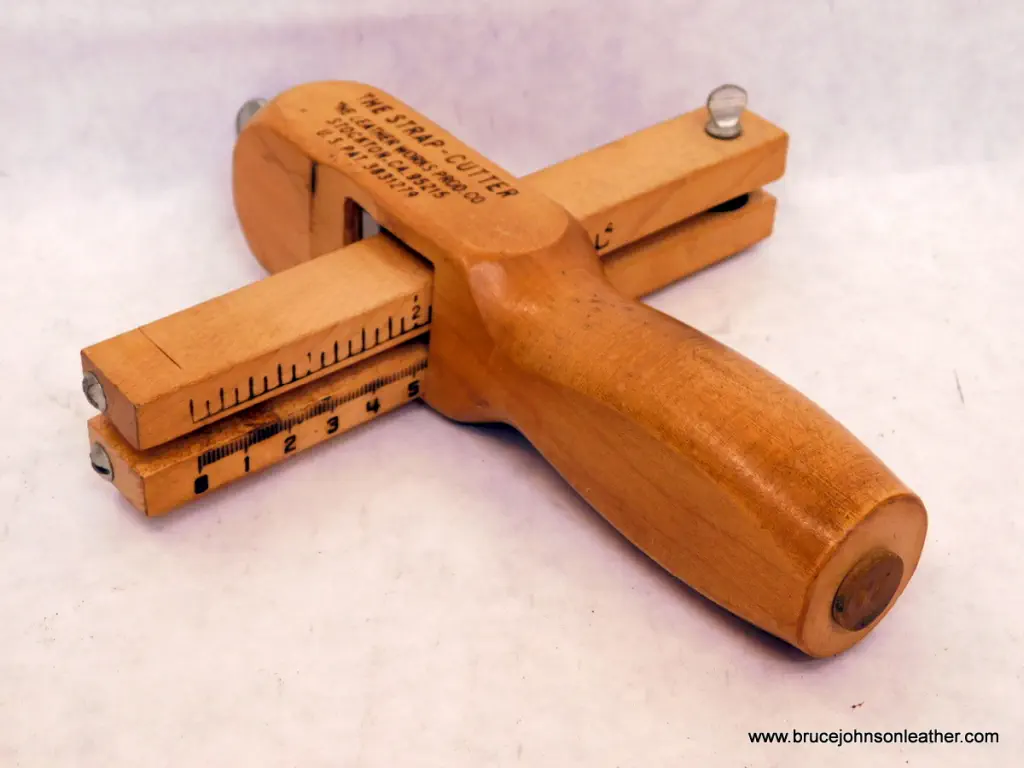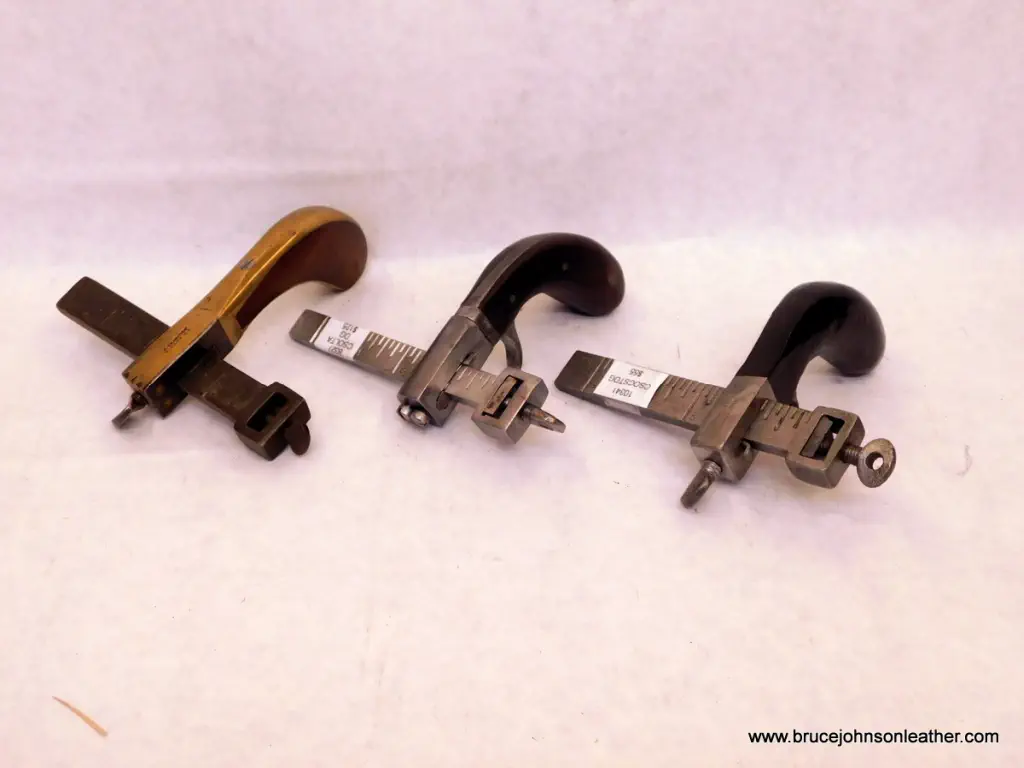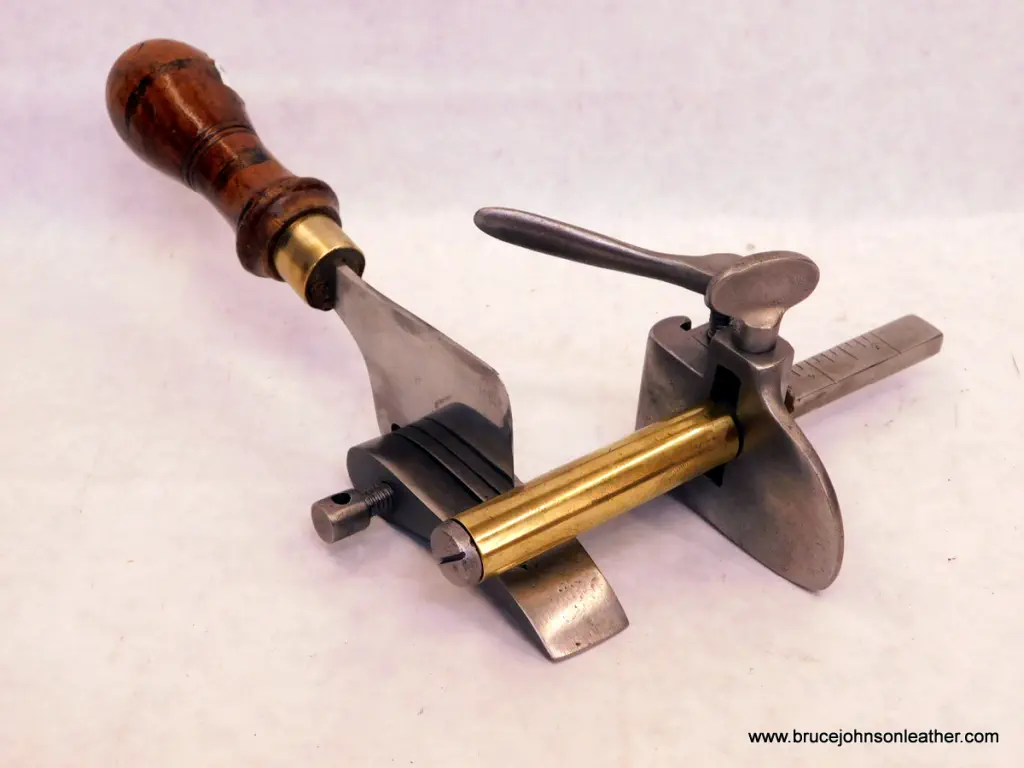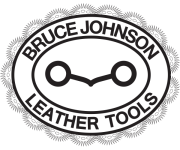Tutorial: Choosing A Hand Held Strap Cutter
There are a few choices in hand held strap cutters and I get the common question – which one is best? Hopefully this tutorial, based on my opinion only, will help you decide. There are three basic types I am going to discuss – the wooden strap cutters, draw gauges, and plough gauges.
Wooden Strap Cutters

The wooden strap cutters are pretty commonly found and used. They have a wooden handle, two parallel bars that support a blade, and adjust up to 4 inches wide. They use a replaceable blade – with the stock blade or some use a single edge razor blade broken off to not stick up. The cutting edge is kind of protected between the wooden bars.
The advantages are these cutters are inexpensive, relatively safe, and readily available. For people who just plain do not sharpen, I’d advise that these are probably the only strap cutter to consider. That said, the stock blades do not come sharp enough to use easily but single razor blades do. With a razor blade I have been able to cut some softer leather than the other strap cutters. The original version was made of hardwood and good quality, the import versions can be made of softer woods and sometimes are not square.
These come with disadvantages too. The space between the two bars on some can limit the thickness of leather that can be cut. The stock blades are small and harder to hold and sharpen to a fine edge. The razor blades can dull pretty fast on some heavy leathers, and are prone to breakage as well. The handles are bulky and uncomfortable for some people, especially those with smaller hands.
My thoughts – everybody still needs one of these.
Draw Gauges

I have a whole separate tutorial on using draw gauges and would encourage you to read that. Draw gauges have commonly been used for at least two hundred years. They were made in several versions – cast metal handle, brass with wooden insert handle, and wood scale handles most commonly. Triggers on these came about the Civil War time in the USA. They have a metal bar with an exposed blade on the end. The blade is replaceable and requires maintenance – sharpening and then stropping with a new blade and as it used. Do not buy a new blade and expect to use it right out of the box.
Advantages – These will cut any thickness of leather. There are older versions pretty readily available and new versions from a few suppliers. Most of these commonly have 4” widths. They have a smaller handle than the wooden strap cutter and with the proper grip can be more comfortable.
Disadvantages are there too. The blade is exposed, the blade is exposed, the blade is exposed. That scares some people. Without some instruction, safety rules get broken and cuts can sure happen. You just need to be aware of the blade. You slice tomatoes in the kitchen with an exposed blade, just be aware of the blade on the draw gauge with the same diligence. The wider the strap, the more torque effect and that can be a problem for people with lesser hand strength. I got my first one without any hands-on instruction many years ago. I saw people gripping with the index finger on the trigger and assumed I was supposed to do that. An old friend showed me to grip with my middle finger on the trigger, index finger naturally goes over the bar to the right of the handle and pushes against the front screw to counter the torque effect, and my thumb is now holding the leather down beside the blade, not in front of the cutting edge. It is a way more natural grip that also stiffens your wrist against torque. Most of the problems users have are based on lack of instruction, dull blades, and poor safety technique. My takeaway - if you can sharpen blades and practice safety then these are a good tool for an affordable price.
Plough Gauges

Plough gauges are a European strap cutting tool. These have a handled blade that is pushed into the leather and the guide is on the left side. These have likewise been around a couple hundred years in several versions.
The advantage of plough gauges are they have no torque regardless of the width of the strap being cut. The push is in line with the cutting edge. There is an adjustable roller in front of the blade to keep the leather down. These will also cut nearly any thickness. I have had one that was 25 cm wide (approx. 10”) but most are 5 to 8 inches wide. They cut from beside the leather and are used on the bench, not under the leather or off the edge of the bench like the wooden strap cutter and draw gauge. The leather rides up over a shoe and into the blade while the guide fence is to the left of the blade. They are more forgiving from a safety standpoint than a draw gauge.
The disadvantages are there. These are expensive and not as available as other strap cutters. The blade is somewhat exposed but behind a roller. It needs to be sharpened and maintained. New blades usually have to be made by a bladesmith. Other than Vergez, I don’t believe anyone else is producing these now.
Bottom line – Plough gauges are a great tool, easy to use for long runs, but harder to find and more expensive.
Final Thoughts
Which strap cutters have I personally used? All three! I made a lot of things that I used all three types on different parts of the project. Each comes with its own advantages and they all have a place on my bench.
